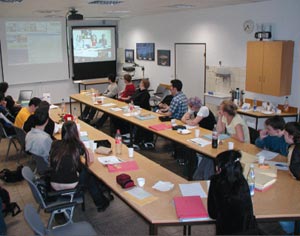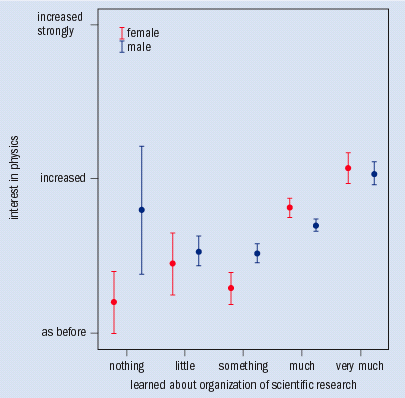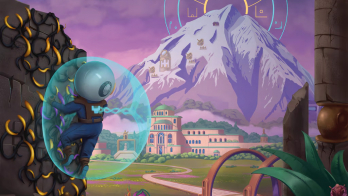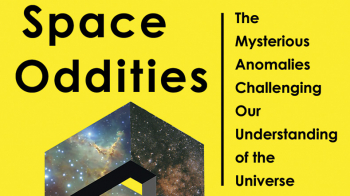Between 7 and 19 March 2005 more than 3000 teenagers from across Europe spent a day working at the frontier of physics in the first European Masterclasses for High School Students. Michael Kobel reports on this successful educational event.

Particle-physics masterclasses began in the UK in 1997, the centenary of J J Thomson’s discovery of the electron. It was then that Ken Long of Imperial College and Roger Barlow of Manchester devised a series of one-day events for 16- to 19-year-old pupils and their teachers. Run by particle physicists at various institutes all over the UK and coordinated by the High Energy Particle Physics Group of the Institute of Physics, each year the programme offers a very popular combination of exciting talks and hands-on experience of the interactive graphical display programs that particle physicists use at CERN. More recently, the concept of the particle-physics masterclasses has been successfully adopted by several institutes in Belgium, Germany and Poland on a regular basis.
The World Year of Physics 2005, commemorating Einstein’s annus mirabilis, was the inspiration for the particle-physics masterclasses to spread even further. It was just enough to mention the idea of a Europe-wide version of this programme for all the members of the European Particle Physics Outreach Group (EPOG) to come on board and try to get institutes in their countries involved. EPOG promotes the outreach activities of particle-physics institutes and laboratories in CERN’s member states and acts as a forum for the exchange of ideas and experiences related to particle-physics outreach. Fifty-eight institutes in 18 countries across Europe, from Athens to Bergen and from Lisbon to Helsinki, participated in the masterclass event, which was centrally coordinated at Bonn University.
The basic idea of the pan-European event was to let the students work as much as possible like real scientists
As with the original masterclasses, the basic idea of the pan-European event was to let the students work as much as possible like real scientists in an authentic environment at a particle-physics institute, not only to feel the excitement of dealing with real data, but also to experience the difficulties of validating the scientific results. After lectures from practising scientists they performed measurements on real data from particle-physics experiments, and at the end of each day, like in an international collaboration, they joined in a videoconference for discussion and combination of the results.
The measurement of the branching ratios of Z boson decays at CERN’s Large Electron-Positron Collider (LEP) was chosen as the main common task at all sites. For this the students had to identify the final states of quark-jets, electron pairs, muon pairs and the notoriously difficult tau pairs from the tracks and signals in various components of LEP detectors. Interactive computer material for this task was available using data from OPAL in the Identifying Particles package from Terry Wyatt at Manchester, or alternatively using DELPHI data in A Keyhole to the Birth of Time by James Gillies and Richard Jacobsson at CERN or in the well known Hands-on-CERN package developed by Erik Johansson of Stockholm.
To simplify students’ access to the unfamiliar world of particle physics, EPOG and the national institutes undertook the immense effort of translating the material into various languages. By the beginning of March, each package was available in at least one of 16 languages, with Hands-on-CERN now covering 14 languages, from Catalan to Slovak. This material, including real data for performing the measurements and several extra teaching and learning packages, lays the basis for regularly performing masterclasses at a European level, and is also of valuable use outside the masterclasses. It is available on the Internet and on a CD that was given to each masterclass participant.

The skills required to become a “particle detective” were taught in the morning lectures at each institute. Since in most countries particle physics is not normally taught at school, the talks had to go all the way from basic explanations to the world of quarks and leptons. “Easy-to-follow explanations of scientific research” was the immediate reaction of one of the students at Berlin. After some brief training by young researchers from the institute, the students made the fascinating discovery that they were indeed able to identify the elementary particles on the event displays themselves, at least in most cases; it was even more fascinating for them to learn that professional scientists cannot be completely sure either on an event-by-event basis that their identification is right. The exercise was in fact usually performed quite quickly: “What next?” was a frequent demand once the Z-decays were measured.
Another innovative idea of the EPOG European Masterclasses was to hold an international videoconference at the end of each day using the same Virtual Room Videoconferencing System (VRVS) technology as practising scientists. CERN’s IT Department and the Slovak group of the Caltech VRVS team provided valuable technical help for the many institutes that had never used this tool before. The link-up was centrally moderated by two inspiring young researchers at CERN: Silvia Schuh from ATLAS, and Dave Barney from CMS (who recently received the 2005 Outreach Prize of the High Energy and Particle Physics Division of the European Physical Society). Using English as a common language, the students discussed why, for instance, classes in Helsinki and Vienna found significantly more taus than those in Innsbruck, Heidelberg, Bonn or Bergen. They then assigned systematic errors derived from the differences and ended up with combined measurements, confirming (happily!) the results from LEP. In addition invited scientists at CERN were ready to answer further questions on topics ranging from antimatter and Big Bang cosmology to the daily life of a CERN researcher.
The videoconferences made the students aware that the masterclasses were taking place in other countries, and created the feeling of an international collaboration of researchers. It was “interesting to learn how scientific information is exchanged around the globe”, according to one of the comments on the feedback questionnaires, which are currently being evaluated by the Leibniz Institute for Science Education (IPN) at the University of Kiel.
How was it for you?
The first results from the evaluation show that, independent of country and gender, some 70% of about 400 female and 900 male students felt strongly or very strongly that they had learned at the masterclasses how scientific research is organized and carried out. More than 81% liked the masterclasses “much” or “very much”, again independent of gender. Moreover, there was significantly higher enthusiasm in Finland, Portugal and the Czech Republic with 96% choosing “much” or “very much”, which can mostly be attributed to particularly interesting lectures and a bigger increase in knowledge of particle physics.

The impact on the student’s interest showed greater spread between the countries. On average 58% of both male and female students felt that they were generally more interested in physics after the masterclasses, and only 6% were less interested. Again, the masterclasses had a significantly stronger impact in Portugal and Finland, with 86% and 95% of students respectively reporting increased interest. In two countries the female participants benefited especially. While the male participants showed no significant deviation from the average, 78% of the Italian girls and all seven female students in Sweden reported an increased interest in physics. The Swedish girls unanimously marked the highest possible increase in their knowledge of particle physics, and felt more strongly than average that they had learned about the organization of scientific research. For all students both factors correlated very strongly with positive answers to the question on increased general interest in physics (see figure 1). Apart from this, the reactions of the female and male students to the masterclass programme were nearly identical, although in all countries the girls said they thought they knew significantly less about physics than the boys and were significantly less familiar with computers.
Finally, regardless of whether they like their current physics lessons at school, 65% of the students thought that modern physics, like particle physics, should play a bigger part in their science lessons (see figure 2). This question showed the largest variation between the countries. The majority was significantly higher, for example, in Germany, with 75% of the students responding positively, and Portugal with 91%. In Switzerland and Norway, by contrast, not even 30% of the students clearly supported this statement. In the latter two countries more than half of the students found the level of the masterclasses rather difficult, while on average only 19% shared this opinion.
“I got the feeling that I did something which physicists do every day in their experiments, and I felt involved.” This statement from a 17-year-old girl shows that the authentic surroundings and the measurements with real data were indeed able to bring modern physics close to the hearts of young people.
• For more details about the event and materials see http://wyp.teilchenphysik.org. The European Masterclasses were sponsored by the High Energy Physics Board of the European Physical Society and the Bundesministerium für Bildung und Forschung (BMBF), and received organizational help from the German Science-on-Stage Executive Office. The EU has acknowledged the success of the first European Masterclasses by nominating the project leader, Michael Kobel, for a Descartes Prize for Excellence in Science Communication for 2005. The project is now competing with 22 other nominees for up to five Descartes Communication Prizes, to be awarded in December in London.







